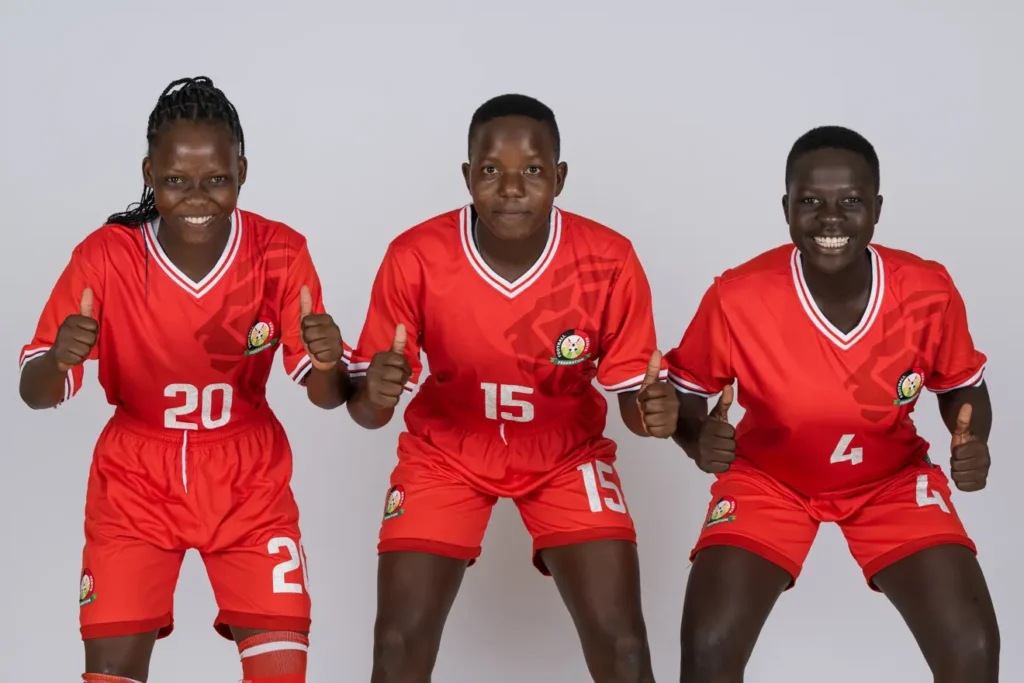As the 2024 U-17 Women’s World Cup kicks off in the Dominican Republic, African women’s football takes center stage with Nigeria, Zambia, and Kenya representing the continent.
These three teams carry the hopes of their nations, eager to demonstrate the growing strength of African football on the global stage.
From October 16 to November 3, these teams will compete among the world’s best, showcasing their talent, resilience, and the immense strides made in African women’s football.
For Kenya, Zambia, and Nigeria, the tournament is not just about competing for glory but also a celebration of the remarkable progress African women’s football has made in recent years.
Each of these teams comes into the tournament with a different level of experience, but they all share the same ambition: to prove that African nations can stand tall on the world stage.
Qualification Journey: The Road to Dominican Republic
The journey to the 2024 U-17 Women’s World Cup was filled with drama and determination for all three African teams. Nigeria’s Flamingos secured their spot after a comprehensive 6-1 aggregate victory over Liberia.
Their dominance was evident in a 4-1 first-leg win, followed by a comfortable 2-0 win in Abuja, showcasing their intent to make a deep run in the tournament.
Zambia’s Copper Princesses battled their way through a tough qualification against Morocco, winning 3-1 on aggregate.
After a goalless draw in Morocco, Zambia’s earlier victory was enough to return them to the global stage, marking their first World Cup appearance in ten years. Their resilience in defense and flair in attack underline their potential as dark horses in the tournament.
Kenya’s Harambee Starlets, meanwhile, made history by qualifying for the U-17 Women’s World Cup for the first time. Their qualification was sealed with an emphatic 5-0 aggregate win over Burundi, including a decisive 2-0 victory in Nairobi.
This historic achievement marks a new chapter for Kenyan women’s football, and the team enters the tournament with a sense of pride and ambition to compete against the world’s elite.

Tournament Schedule and Groupings
Nigeria finds itself in Group A, where it will face New Zealand, Ecuador, and the tournament hosts, the Dominican Republic.
The Flamingos’ opening match against New Zealand on October 16 sets the tone for their campaign, followed by key clashes against Ecuador and the Dominican Republic on October 20 and 23, respectively.
Kenya, placed in Group C, faces a challenging group with North Korea, Mexico, and England. Their first match against North Korea on October 17 will be crucial in setting the pace for their debut tournament.
With matches against Mexico and England to follow, the Harambee Starlets will need to summon all their courage and tactical discipline to secure their place in the knockout stages.
Zambia, in Group D, faces Japan, Poland, and Brazil, a group brimming with football pedigree. Their opener against Japan on October 17 will be a tough test, followed by matches against Poland and Brazil on October 20 and 23, respectively.
Zambia’s players are no strangers to top-level competition, having competed in the recent Olympic Games and World Cup tournaments, and they’ll be looking to leverage that experience here.
Players to Watch
For Nigeria, forward Harmony Chidi is expected to play a key role. Having scored five goals in the qualifiers, Chidi’s pace and precision in front of goal make her a constant threat.
Meanwhile, Rotimo Muinat, a dynamic midfielder, brings creativity and grit to the Nigerian midfield, with her excellent passing and defensive contributions.
Zambia’s Namute Chileshe is a forward who consistently delivers, with four goals in the qualifiers and an impressive ability to dribble past opponents.
Defensively, Precious Mwape stands out, having made 20 tackles and 10 interceptions, ensuring Zambia’s backline remains difficult to breach.
Kenya’s hopes will rest on Pearl Mungai, a talented midfielder who contributed three goals and eight tackles in the qualifiers.
Mungai’s all-round abilities make her crucial to Kenya’s chances. Up front, Marion Serenge is Kenya’s creative spark, with two goals and 10 successful dribbles in the qualifiers, highlighting her ability to unlock defenses.
Tactical Approaches
Nigeria, under head coach Bankole Olowookere, employs an offensive style focused on ball possession and quick transitions. This strategy allows them to exploit the pace of their forwards, making them a dangerous team for any opponent.
Zambia, guided by Carol Kanyemba, adopts a more balanced approach. Known for their strong defense and effective counterattacks, the Copper Princesses will be looking to absorb pressure and strike decisively on the break.
Kenya’s Mildred Cheche, on the other hand, prioritizes a solid defensive structure and relies on counterattacking opportunities. With Kenya making their debut on the world stage, Cheche’s cautious but disciplined approach could prove vital against more seasoned teams.
A Historic Milestone
For Nigeria, this will be their seventh appearance at the U-17 Women’s World Cup, with their best finish being third place in the 2022 edition in India.
Zambia, back in the tournament for the first time since 2014, brings with them valuable experience from the Olympics and recent senior World Cup tournaments.
Kenya’s debut appearance marks a momentous occasion for the nation, and the team will be eager to make a statement in their maiden campaign.
As the tournament begins, all eyes will be on these African teams, eager to see how they fare on the global stage.
Whether it’s Nigeria’s experience, Zambia’s resilience, or Kenya’s hunger to make history, the 2024 U-17 Women’s World Cup promises to be a thrilling showcase of African women’s football.
